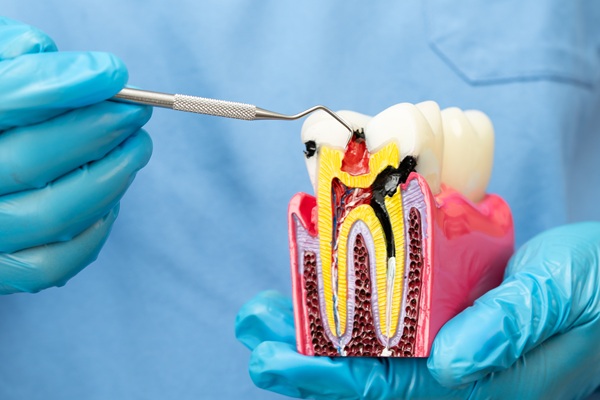When Root Canal Retreatment Is an Emergency

Root canal retreatment can prevent infection, pain, or swelling from compromising oral health. A root canal saves a tooth by removing inflamed or infected pulp and sealing internal spaces, but certain situations call for retreatment to restore stability. Recognizing the signs that this treatment may be urgently necessary allows a dental provider to act quickly and protect the smile. With prompt care, patient comfort returns faster, and the tooth’s long-term outlook improves.
What is root canal retreatment?
Root canal retreatment is an endodontic procedure performed on a previously treated tooth when symptoms or X-rays show persistent or recurrent disease. During retreatment, the dental provider removes the existing filling materials, cleans and reshapes the canals, and seals the spaces with new filling material. The goal is to eliminate lingering bacteria, resolve inflammation, and create a fresh, leak-resistant seal that supports a new dental restoration. Typically, this restoration is a tooth-colored dental crown.
A provider may recommend root canal retreatment for several reasons. For one, complex canal anatomy can conceal an additional canal that was not addressed during root canal therapy. Alternatively, new decay may have penetrated the initial crown or filling, reintroducing bacteria into the canal system. A cracked restoration, loosened crown, or delayed final crown placement can also make way for contamination, resulting in renewed infection and discomfort.
When root canal retreatment is an emergency
Certain red-flag symptoms call for same-day root canal retreatment from a dental provider. Severe, throbbing pain that disrupts sleep, facial or gum swelling with a pimple-like bump, warmth and tenderness over the jaw, or a bad taste from drainage often indicate active infection around a previously treated tooth. An abscess can build pressure quickly and damage nearby bone and soft tissues. The good news is that prompt care and retreatment can help relieve pain quickly and save the tooth.
Higher-risk situations also lower the threshold for urgent dental care. Orthodontic care, scheduled travel, or upcoming surgery can complicate infection control if retreatment is delayed. Patients managing diabetes, heart conditions, or immune challenges face faster-moving infections and slower healing. It is recommended to consult a dental provider promptly if signs indicate the need for urgent retreatment.
When to go to the ER before seeking retreatment
While dental providers can address urgent dental problems, they do not treat life-threatening conditions. A hospital emergency room (ER) is the right setting if any of the following appear:
- Swelling that spreads toward the eye, cheek, or neck
- Difficulty breathing or swallowing
- Uncontrolled bleeding
- Fever higher than 101 degrees Fahrenheit with chills or confusion
- Facial trauma suspected to involve a broken jaw
These signs indicate airway risk or systemic infection and require hospital-level care before dental treatment can resume.
Contact us for prompt root canal retreatment
Fast, decisive care turns a stressful dental flare-up into a manageable plan. A dental provider can triage symptoms and work quickly to manage pain and swelling through root canal retreatment. Clear communication about timelines, restoration needs, and home-care steps helps prevent reinfection. With early intervention, most retreatment cases restore comfort and function for years to come. Contact us today at (407) 543-0798 to learn more.
Request an appointment here: https://altamontesmiles.com or call Altamonte Smiles at (407) 543-0798 for an appointment in our Altamonte Springs office.
Check out what others are saying about our dental services on Yelp: Root Canal in Altamonte Springs, FL.
Related Posts
When the subject of a root canal comes up, people often imagine an unbearable dental procedure that requires a relatively long recovery period. Endodontists perform a root canal when there is an issue such as infection or inflammation, which could cause tooth decay, cracked teeth or continuous treatment of the affected areas. Undergoing a root…
A dental emergency can happen at any time, particularly to the soft tissue in your mouth. This guide will go over what kinds of emergencies can occur and what steps you should take afterward. This will help you to take care of yourself, whether you are currently experiencing an injury in your mouth or you’re…
Many people will lose at least one tooth at some point in their lives, which can lead to oral health issues. Fortunately, a restorative dentist can replace missing teeth in several ways. These options can help patients restore the function and appearance of their smiles.Bone tissues need to be regularly stimulated to remain healthy, as…
A restorative dentist can bring back your smile and dental function. You should consult this dentist first before your treatments begin. That way, you will know what the procedures will entail. Here are some of the things to expect during your consultation with your dentist.Some restorative dental treatments are invasive. This may cause anxiety in…


